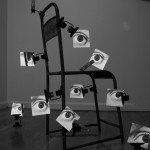Eva Timothy
Eva Timothy has a unique and “illuminated” viewpoint about photography. Her new series, Lost in Learning, is a concept that we could all apply to our way of looking at the world: as Explorers. The idea of approaching everything we do with curiosity, the desire to learn more, and synthesize information that allows for discovery and positive thinking, is indeed, a great one.
Her articulate voice is one worth reading, and it makes sense that she was a media communications major at the University of Utah and subsequently studied at the Oxford School of Photography in the UK. Currently, her work is garnering attention, awards, and exhibitions. Lost in Learning won the first place Professional Books in the PX 3 Awards and will be available September 1st. The book has recently been collected by the U. S. Library of Congress – Permanent Collection,The British Library, The Fox Talbot Museum and the Victoria Albert Museum – National Art Library, the University of Oxford, England at Green Templeton College, the Michigan State University Rare Books Special Collections , and she is now represented by Photoeye Gallery.
As a photographer, I have often found the camera lens to be an apt metaphor for our own lives. We choose our focal points. We determine how much light to let in. We decide whether to view life through the dreary windows of skepticism or through the lens of hope and opportunity.
The aim of the Lost in Learning project has been to inspire our inner explorer, creator and dreamer through a enigmatic depiction of an age when exploration and learning were life’s supreme adventures.
Too much of education has become distilled to bit-size, memorizable chunks. We’ve built great walls between art and science and then condensed them to a series of facts and principles. In so doing we’ve made learning more “manageable”, but we’ve much of what made it appetizing in the
first place.
As a photographer the optical innovations which spurred historic breakthroughs is especially fascinating. The Age of Discovery was an era when when people first took a lens and pointed it across the sea in search of new worlds. Or turned it Heavenward exploring worlds beyond our own. Or focused on something as simple as a blade of grass, revealing the worlds within worlds.
In Search of New Worlds II – From Imago Mundi by Pierre d’Ailly, 1410
Turning my own lens on the relics of centuries past I have sought to recapture that spirit of the explorers and the wanderers, the creators, scientists and the seekers and who left us with a legacy of what it means to lose ourselves in the grand voyage of learning.
Halleluja – From Handel’s Messiah, 1741
Introducing new angles to iconic images from centuries ago, history comes unfrozen for a moment, becoming part of the present. Gazing through the varied lenses of learning and enshrouded in a photographic sfumato, these images entice us to look deeper into the the passions that inspired these figures in their journeys.
Prism Light – From the Title Page of Opticks by Sir Isaac Newton, 1704
Half a millenium later, we revere them immensely. We laud them in our histories and honor their accomplishments in our greatest museums.
But have we learned what they truly had to teach us?
The Astronomer – Moon Sketch from Siderius Nuncius by Galileo Galilei, 1610 / Portrait of Galileo by Justus Sustermans, 1636
Not merely the names, dates, formulae and theories. Not just the scientific breakthroughs or cultural masterpieces, but something much more profound…A spirit of searching and seeking which they radiated. An insatiable curiosity and desire to know which neither persecution nor the peril of their very lives could suppress.
Sun, Earth, & Moon – From the Leicester Codes by Leonardo da Vinci, 1508-1512
Perhaps looking deeper we will discover for ourselves the souls of these great ones and in their lives find a reflection of ourselves.
Sundial – Universal Horizontal Sundial, Johannes Koch, Stockholm, c. 1650-1679
(courtesy of the History of Science Department, Collection of Historical Scientific Instruments, Harvard University)
Learners…not simply of fiscal necessity…but willful wanderers into the great unknown.
The Man Behind the Mona Lisa – Mona Lisa by Leonardo da Vinci, Louvre, Paris, France 1503-1506
Posts on Lenscratch may not be reproduced without the permission of the Lenscratch staff and the photographer.
Recommended
-
Ricardo Miguel Hernández: When the memory turns to dust and Beyond PainNovember 28th, 2025
-
Pamela Landau Connolly: Columbus DriveNovember 26th, 2025
-
Interview with Maja Daniels: Gertrud, Natural Phenomena, and Alternative TimelinesNovember 16th, 2025
-
Robert Rauschenberg at Gemini G.E.LOctober 18th, 2025
-
Hillerbrand+Magsamen: nothing is precious, everything is gameOctober 12th, 2025

























































